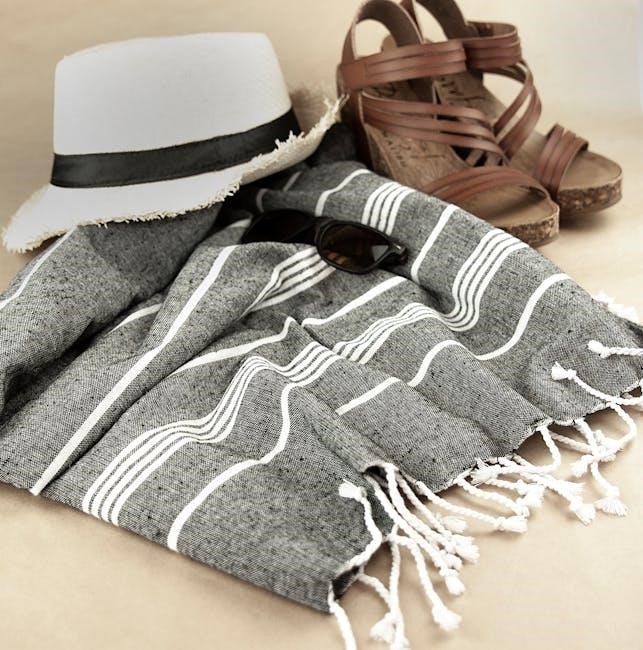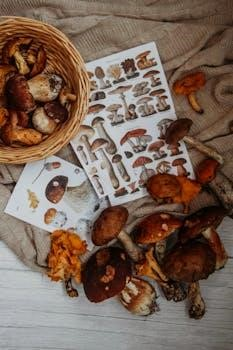Dive into the delightful world of taffy with our comprehensive guide! From classic tastes to innovative blends, discover the vast spectrum of taffy flavors. Whether you prefer fruity, chocolatey, nutty, or something entirely unique, this guide will navigate you through the delicious universe of taffy.
What is Taffy?
Taffy is a beloved candy with a unique, chewy texture, originating in the United States. It’s crafted from a base of boiled sugar, butter, and vegetable oil, creating a sticky mass that undergoes a fascinating transformation. This base is then stretched and pulled, a process that aerates the candy, infusing it with tiny air bubbles. This aeration is the key to taffy’s signature light, fluffy, and chewy consistency that sets it apart from other confections.
Beyond its simple base, taffy’s versatility shines through the addition of various flavorings and colorings. From classic tastes like vanilla and chocolate to fruity delights and even unique combinations, the possibilities are endless. This adaptability allows for a wide range of taffy experiences, catering to diverse palates and preferences. Whether enjoyed as a nostalgic treat or a novel indulgence, taffy continues to capture hearts with its playful texture and diverse flavor profiles, making it a timeless favorite in the candy world.
The Taffy-Making Process
The journey of transforming simple ingredients into the chewy delight of taffy is a fascinating process that blends science and artistry. It begins with carefully combining sugar, corn syrup, and butter in a large kettle, where the mixture is heated to a precise temperature. This crucial step ensures the sugar dissolves completely, creating a smooth, syrupy base. Once the desired consistency is achieved, the mixture is transferred to a cooling table.
Here, the magic truly begins. As the taffy cools slightly, flavorings and colorings are added, infusing the batch with its signature taste and vibrant hue. Next, the taffy is stretched and pulled, either by hand or using specialized machines. This process incorporates air into the mixture, giving taffy its characteristic light and airy texture. The stretching continues until the taffy becomes glossy and pliable. Finally, the taffy is cut into individual pieces, wrapped to maintain its freshness, and is ready to be enjoyed.
Classic Taffy Flavors
Step into the nostalgic realm of classic taffy flavors, where timeless tastes evoke memories of boardwalks and sweetshops. Vanilla stands as a quintessential choice, offering a pure, creamy sweetness that forms the foundation for many other variations. Chocolate, another beloved classic, brings rich, decadent notes, satisfying the cravings of chocolate enthusiasts. Peppermint provides a refreshing, minty zing, often associated with festive holidays and cool sensations.
Lemon offers a tangy and citrusy burst, balancing sweetness with a touch of zest. Cinnamon delivers a warm, spicy kick, creating a comforting and aromatic experience. These classic flavors have stood the test of time, continuing to delight generations with their simple yet satisfying profiles. Whether enjoyed on their own or as part of a mixed assortment, these timeless taffy flavors offer a taste of tradition and a comforting sweetness that never fades.
Fruit-Based Taffy Flavors
Embark on a vibrant journey through fruit-based taffy flavors, where the natural sweetness of fruits is captured in chewy, delightful bites. Strawberry offers a classic fruity taste, reminiscent of summer picnics and sweet desserts. Apple, often found in green apple variations, provides a crisp and slightly tart flavor, creating a refreshing candy experience; Banana delivers a creamy, tropical sweetness, evoking thoughts of warm beaches and banana splits.

Grape captures the juicy essence of ripe grapes, offering a sweet and slightly tangy taste. Raspberry presents a berry-rich flavor, balancing sweetness with a hint of tartness. Blueberry provides a sweet and slightly earthy flavor, reminiscent of fresh-picked berries. These fruit-based taffy flavors offer a burst of natural sweetness, making them a perfect choice for those who enjoy the taste of real fruit in their candy.
Chocolate Taffy Variations
Indulge in the decadent world of chocolate taffy variations, where the rich and comforting taste of chocolate meets the chewy texture of taffy. Classic chocolate taffy offers a pure, unadulterated chocolate experience, satisfying cravings with its smooth and creamy flavor. Chocolate peanut butter taffy combines the nutty goodness of peanut butter with the sweetness of chocolate, creating a harmonious blend of flavors.
Chocolate mint taffy offers a refreshing twist, combining the coolness of mint with the richness of chocolate. For those who enjoy a bit of crunch, chocolate walnut taffy adds the satisfying texture of walnuts to the mix. Rocky Road chocolate taffy brings together chocolate, marshmallows, and nuts, creating a textured and flavorful candy experience. These chocolate taffy variations offer a diverse range of flavors, ensuring there’s a chocolate taffy to satisfy every palate.
Nut-Inspired Taffy Flavors
Explore the nutty delights of nut-inspired taffy flavors, where the rich and earthy tastes of various nuts elevate the chewy sweetness of taffy. Peanut butter taffy is a classic favorite, offering a creamy and salty-sweet experience that’s both comforting and satisfying. Pecan taffy brings the buttery and slightly smoky flavor of pecans to the forefront, creating a sophisticated and indulgent treat.
For those who enjoy a touch of elegance, walnut taffy provides a subtly bitter and earthy flavor that complements the sweetness of the taffy base. Coconut taffy offers a tropical twist, infusing the taffy with the sweet and slightly exotic flavor of coconut. These nut-inspired taffy flavors provide a delightful combination of textures and tastes, making them a perfect choice for nut lovers seeking a unique candy experience. Each bite offers a satisfying crunch and a burst of nutty goodness.
Unique and Novelty Taffy Flavors
Step into the extraordinary realm of unique and novelty taffy flavors, where creativity knows no bounds. These unconventional flavors push the boundaries of traditional taffy, offering a whimsical and exciting experience for adventurous taste buds. Birthday cake taffy captures the essence of a celebratory treat, infusing the chewy candy with the sweet and buttery flavor of vanilla cake and sprinkles. For those who crave a spicy kick, chili mango taffy combines the sweetness of mango with a fiery chili flavor, creating a tantalizing contrast.
Super Smashing Sour taffy delivers an intensely sour punch, perfect for sour candy enthusiasts. Molasses Mint taffy blends the rich and earthy flavor of molasses with the refreshing coolness of mint. These novelty flavors offer a delightful departure from the ordinary, making them a memorable and conversation-worthy treat. Each bite is an adventure, sparking joy and curiosity with every chew. Explore the unexpected and discover your new favorite flavor today!
Salt Water Taffy Flavors
Embark on a flavorful journey with salt water taffy, a nostalgic treat synonymous with seaside vacations and boardwalk memories. Despite its name, salt water taffy doesn’t actually contain seawater, but rather a touch of salt that enhances its sweetness and creates a unique flavor profile. Classic flavors like vanilla, chocolate, and peppermint are perennial favorites, offering a comforting and familiar taste. Fruity options such as strawberry, raspberry, and blueberry provide a burst of summery goodness.
For a taste of the tropics, banana, lemon, and key lime taffy evoke sunny days and refreshing breezes. Salted caramel taffy combines the rich, buttery flavor of caramel with a hint of sea salt, creating a decadent and irresistible treat. With a wide array of flavors to choose from, salt water taffy offers something for everyone, making it the perfect candy to share with friends and family. Each chewy piece is a reminder of carefree days and sweet moments.
Sugar-Free Taffy Options
Indulge in the sweet pleasure of taffy without the guilt with our delightful range of sugar-free options. Perfect for those watching their sugar intake or managing dietary restrictions, these taffies offer the same chewy texture and delicious flavors as their traditional counterparts. Using sugar substitutes, these options allow you to enjoy your favorite candy without compromising your health goals. Classic flavors like vanilla, chocolate, and strawberry are available in sugar-free versions, ensuring that everyone can find a flavor they love.
Fruity flavors such as apple, blueberry, and raspberry provide a tangy and refreshing alternative. For those seeking a more adventurous taste, sugar-free peppermint and cinnamon taffies offer a spicy and invigorating experience. These taffies are ideal for individuals with diabetes, those following a low-sugar diet, or anyone simply looking to reduce their sugar consumption. With sugar-free taffy, you can satisfy your sweet tooth while maintaining a balanced and healthy lifestyle, making it a guilt-free treat for any occasion.
Taffy Flavor Assortments
Can’t decide on just one flavor? Taffy flavor assortments are the perfect solution, offering a delightful mix of tastes to satisfy every palate. These assortments often include a variety of classic and unique flavors, providing a diverse candy experience in every bite. From fruity medleys featuring strawberry, banana, and grape to chocolatey collections with milk chocolate, dark chocolate, and chocolate peanut butter, there’s an assortment for everyone. For those who enjoy a bit of everything, mixed assortments combine sweet, salty, and tangy flavors for a truly exciting treat.

Holiday-themed assortments, such as those for Valentine’s Day or Christmas, add a festive touch to any celebration. Custom assortments allow you to create your perfect blend, choosing from a wide range of flavors to suit your personal preferences. Whether you’re sharing with friends and family, gifting to a loved one, or simply treating yourself, taffy flavor assortments offer a convenient and delicious way to enjoy a variety of tastes and textures.

Taffy Color and Flavor Associations
The world of taffy is not just about taste; it’s also a visual delight! Colors often provide a hint, or even a strong indication, of the flavor you’re about to experience. For instance, yellow taffy is frequently associated with banana or lemon flavors, bringing a burst of sunshine to your taste buds. Red taffy typically signals cherry or strawberry, offering a sweet and fruity sensation. Green taffy often represents green apple or lime, providing a tangy and refreshing zest.
Purple taffy is commonly linked to grape, delivering a juicy and vibrant flavor, while brown taffy usually indicates chocolate, promising a rich and decadent experience. These color-flavor associations aren’t just tradition; they enhance the overall sensory experience, making each piece of taffy even more enjoyable. However, be prepared for surprises! Some taffy makers love to play with expectations, creating unexpected flavor combinations that defy these conventions. This playful approach adds an element of fun and discovery to the taffy experience, keeping your taste buds guessing and eager for more.
Seasonal Taffy Flavors
Taffy isn’t just a year-round treat; it’s also a delightful way to celebrate the changing seasons! As the leaves turn and the air cools, autumn brings flavors like apple pie, cinnamon, and pumpkin spice taffy. These warm and comforting flavors evoke feelings of cozy gatherings and holiday cheer. Winter ushers in peppermint, gingerbread, and eggnog taffy, perfect for festive celebrations and snowy days. These flavors capture the magic of the season, making every bite a reminder of joyful traditions.

Spring brings a burst of freshness with flavors like strawberry, lemon, and key lime taffy. These light and vibrant flavors mirror the blooming flowers and sunny days of the season. Summer is all about tropical and fruity flavors like watermelon, mango, and coconut taffy. These refreshing flavors transport you to beaches and summer vacations, offering a sweet escape from the heat. Seasonal taffy flavors add a special touch to holidays and celebrations, creating memorable moments with every delicious piece.
Taffy Flavor Identification Guide (Tails)
Ever wondered what flavor that colorful piece of taffy is without unwrapping it? The secret lies in the tails! Many taffy makers use color-coded tails to help you identify the flavor at a glance. For example, banana taffy often has yellow taffy with orange tails, while cherry taffy might have pink taffy with red tails. Chocolate taffy commonly features brown taffy with brown tails, and cinnamon taffy is often white with yellow tails.
Coconut taffy may be white with brown tails, and grape taffy could be purple with green tails. Lemon taffy is frequently yellow with yellow tails. These color associations can vary slightly between different taffy brands, but they provide a helpful guide for quickly identifying your favorite flavors. Keep this guide handy for easy taffy navigation, especially when you’re faced with a colorful assortment of unwrapped treats. Enjoy the sweet surprise, now with a little help from the tails!



































